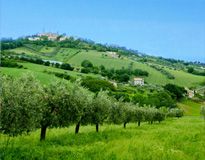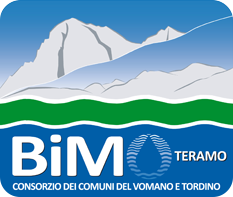
Abruzzo is a populated earth of myths and legends, wild landscapes and spiritual places. The hermitages and the abbeys are numerous, all united by the sense of concentration and silence that only the tall peaks can give to travellers.
For a long time, the quiet and the possibility to isolate from the external world have made such areas the ideal places for walks toward the spiritual perfection.
Grotte di Sant’Angelo (Ripe di Civitella)
An inseparable bond among territory and monastic presence that it is still testified in Valle del Salinello by the over forty caves, chosen by the hermits as shelter.
That of Sant'Angelo in Ripe di Civitella del Tronto (TE), is a solitary and rocky sanctuary, set in the heart of the mountain and licked up by the clear waters of Salinello, on the southern slope of Girella Mountain, or Fiori Mountain.
You come here through a run in the middle of nature through a road drawn between ravines and spikes of rock; crossing it and you will find an environment unchanged in the centuries.
The principal cave, heart of the whole sanctuary, is high around three meters and sinks in the rock for fifteen meters. The sacred value of the place is detectable by the presence of two altars, of which one is visible only in the cafeteria plate, in proximity of the wall leading. Climbing some stairs, on the right, there is a great natural window opened on an enchanting sight that comes up to the Adriatic from the valley of Salinello.
Thanks to the studies of the physician and archaeologist Concezio Rosa, this place got the correct relief. The Cave of Sant'Angelo resulted already frequented 10.000 years B.C.
Santa Mari dei Lumi (Civitella del Tronto)
Sets out few of the city boundaries, almost to the border between Abruzzo and Marche, on a pleasant hill where you can see the coastal and Ascoli hinterland, 'guarded' from the so-called Gemelli Mountains, rises the ancient Grancia Benedettina di Santa Maria.
The Christian life and the social role of the Convent have drawn their originality from the devotion to Madonna dei Lumi. The name derives from a prodigious phenomenon: rejoicing angels seemed from far lights around the Sanctuary. From this time it had the title of Santa Maria dei Lumi or de la Lumera. The believers turn to Her with the title of Madonna de la Piova because both May 20th 1779, and April 27th 1893 it rains thanks to her. In honor of the Virgo there is a party the 27 April of every year.
.
Scala Santa (Campli)
The top privilege of Scala Santa was attributed by an edict of Papa Clemente XIV in the 1772. The Stairs consists of twenty-eight steps in wood of hard oak, to climb in knee and to lowered head (the women with the covered head), praying according to the will of the Pope and asking forgiveness for sins. An hard penitence but the rewards for the believers is a complete indulgence with the same value of the one you can obtain begging on the Scala Santa in Rome.
 en
en 













